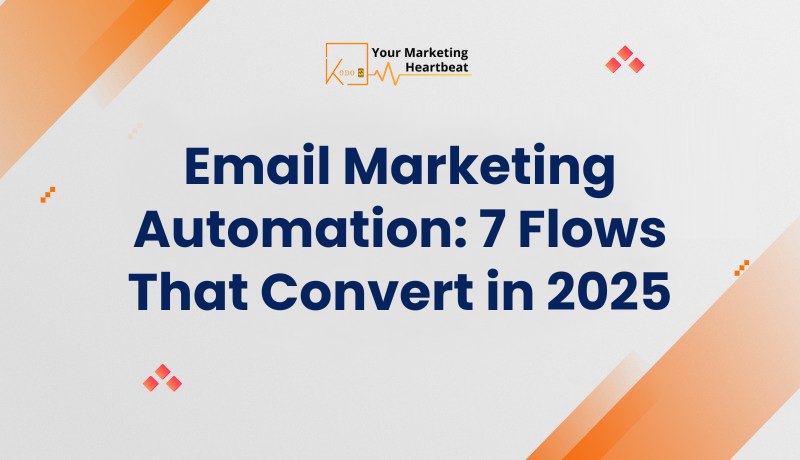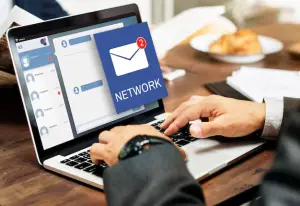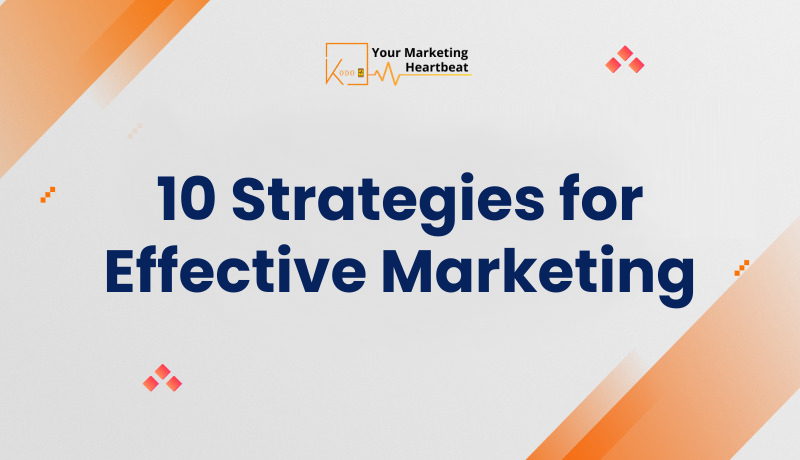
Email Marketing Automation: 7 Flows That Convert in 2025

In the ever-evolving landscape of digital marketing, email automation has emerged as a powerhouse for businesses seeking to nurture leads, boost conversions, and cultivate lasting customer relationships. As we approach 2025, the sophistication of email marketing tools and strategies continues to grow, offering unprecedented opportunities for personalized, timely, and highly effective communication with your audience.
In this comprehensive guide, we’ll explore seven cutting-edge email automation flows that are set to dominate the marketing scene in 2025. These strategies leverage advanced technologies, behavioral insights, and data-driven approaches to deliver messages that resonate with recipients and drive meaningful actions. Whether you’re a seasoned marketer or new to the world of email automation, this article will equip you with the knowledge and tactics needed to stay ahead of the curve and maximize your email marketing ROI.
Table of Contents
- Welcome Series: First Impressions Matter
- Abandoned Cart Recovery: Reclaiming Lost Sales
- Post-Purchase Nurture: Building Customer Loyalty
- Re-engagement Campaigns: Winning Back Inactive Subscribers
- Behavioral Trigger Emails: Right Message, Right Time
- Personalized Product Recommendations: AI-powered Suggestions
- Customer Feedback Loop: Continuous Improvement
Welcome Series: First Impressions Matter
The welcome series is your digital handshake, setting the tone for your relationship with new subscribers. In 2025, these initial touchpoints will be more sophisticated and personalized than ever before.
Key Components of an Effective Welcome Series:
- Immediate Confirmation: Send a prompt confirmation email to validate the subscription and express gratitude.
- Brand Introduction: Share your company’s story, values, and unique selling propositions.
- Expectation Setting: Clearly communicate what subscribers can anticipate in terms of content and frequency.
- Preference Center: Allow subscribers to customize their email preferences from the outset.
- Incentive Offer: Provide a special discount or exclusive content to encourage engagement.

Best Practices for 2025:
- Implement dynamic content that adapts based on the subscriber’s sign-up source or initial interactions.
- Utilize AI-driven language processing to tailor the tone and style of your welcome messages to individual preferences.
- Incorporate interactive elements like quizzes or surveys to gather more data and personalize future communications.
By crafting a thoughtful and engaging welcome series, you’ll lay a strong foundation for long-term customer relationships and set the stage for future conversions.
Abandoned Cart Recovery: Reclaiming Lost Sales
Abandoned cart emails have long been a staple of e-commerce email marketing, but in 2025, they’ll be supercharged with advanced technologies and psychological insights.
Key Strategies for Abandoned Cart Recovery:
- Timing Optimization: Use machine learning algorithms to determine the ideal timing for recovery emails based on individual user behavior.
- Dynamic Product Showcases: Automatically populate emails with high-quality images and descriptions of abandoned items.
- Social Proof Integration: Include real-time customer reviews and ratings to build trust and urgency.
- Personalized Incentives: Offer tailored discounts or free shipping based on the customer’s history and cart value.
- Cross-Sell Recommendations: Suggest complementary products that enhance the original purchase intention.
Innovative Approaches for 2025:
- Implement augmented reality (AR) previews, allowing customers to visualize products in their own space directly from the email.
- Utilize predictive analytics to identify and address potential objections before they lead to abandonment.
- Integrate live chat support within the email, enabling customers to ask questions and resolve concerns instantly.
By refining your abandoned cart strategy with these advanced techniques, you’ll be well-positioned to recover a significant portion of potentially lost revenue.
Post-Purchase Nurture: Building Customer Loyalty
The journey doesn’t end at the point of sale. In 2025, post-purchase email flows will play a crucial role in fostering customer satisfaction, encouraging repeat purchases, and turning buyers into brand advocates.
Essential Elements of Post-Purchase Nurture:
- Order Confirmation: Provide clear, detailed information about the purchase and expected delivery.
- Shipping Updates: Keep customers informed about their order’s progress with real-time tracking information.
- Product Usage Guides: Share tips, tutorials, and best practices to help customers get the most out of their purchase.
- Review Requests: Solicit feedback and reviews at the optimal time, typically after the customer has had a chance to use the product.
- Cross-Sell Opportunities: Suggest relevant products or accessories based on the initial purchase.
Advanced Tactics for 2025:
- Implement IoT integration for smart products, sending usage tips and maintenance reminders based on actual product data.
- Use predictive analytics to anticipate and proactively address potential issues or concerns.
- Create personalized video content demonstrating product features tailored to the customer’s specific purchase and preferences.
A well-executed post-purchase nurture flow not only enhances customer satisfaction but also paves the way for increased lifetime value and positive word-of-mouth marketing.
Re-engagement Campaigns: Winning Back Inactive Subscribers
As email lists naturally decay over time, re-engagement campaigns become crucial for maintaining a healthy, active subscriber base. In 2025, these campaigns will leverage advanced data analysis and personalization techniques to reignite interest and activity.
Key Components of Effective Re-engagement:
- Segmentation: Identify different types of inactive subscribers based on past engagement levels and purchase history.
- Personalized Content: Craft messages that speak directly to the subscriber’s interests and previous interactions with your brand.
- Incentives: Offer compelling reasons to re-engage, such as exclusive discounts or early access to new products.
- Preference Updates: Provide easy options for subscribers to update their preferences or reduce email frequency.
- Clear Call-to-Action: Make it simple for recipients to indicate their desire to stay subscribed or opt-out.
Innovative Approaches for 2025:
- Utilize AI-powered content generation to create highly personalized re-engagement messages at scale.
- Implement interactive emails that allow subscribers to update preferences or make purchases directly within the email.
- Integrate cross-channel re-engagement strategies, coordinating email efforts with social media and SMS campaigns.
By focusing on re-engaging inactive subscribers, you can revitalize your email list, improve deliverability, and recover potentially lost revenue opportunities.
Behavioral Trigger Emails: Right Message, Right Time
Behavioral trigger emails represent the pinnacle of personalized, timely communication. In 2025, these automated messages will become even more sophisticated, leveraging real-time data and predictive analytics to deliver hyper-relevant content.
Types of Behavioral Triggers:
- Browse Abandonment: Follow up with subscribers who viewed specific products but didn’t add them to their cart.
- Price Drop Alerts: Notify customers when items they’ve shown interest in go on sale.
- Back-in-Stock Notifications: Alert subscribers when previously unavailable items are restocked.
- Purchase Anniversary: Celebrate customer milestones and encourage repeat purchases.
- Content Engagement: Send related articles or products based on blog posts or videos the subscriber has interacted with.
Advanced Strategies for 2025:
- Implement machine learning algorithms to predict and preemptively address customer needs before they arise.
- Utilize contextual data such as weather, location, and local events to further personalize trigger emails.
- Integrate voice-activated responses, allowing subscribers to interact with emails using smart speakers or virtual assistants.
By mastering behavioral trigger emails, you’ll create a responsive, intelligent email marketing system that feels like a personal shopper or concierge for each subscriber.
Personalized Product Recommendations: AI-powered Suggestions
As AI and machine learning technologies continue to advance, personalized product recommendations in emails will become increasingly accurate and influential. In 2025, these suggestions will feel less like marketing and more like helpful advice from a knowledgeable friend.
Key Elements of Effective Product Recommendations:
- Data Integration: Combine data from multiple sources, including browsing history, purchase behavior, and demographic information.
- Real-Time Updates: Ensure recommendations reflect the most current inventory and pricing information.
- Context-Aware Suggestions: Tailor recommendations based on factors like season, location, and current events.
- Visual Appeal: Present recommendations with high-quality images and concise, compelling descriptions.
- Easy Purchase Path: Minimize friction by allowing customers to add recommended items to their cart directly from the email.
Cutting-Edge Approaches for 2025:
- Implement collaborative filtering algorithms that consider not just individual preferences but also patterns among similar customers.
- Utilize natural language processing to analyze customer reviews and social media sentiment, refining recommendations based on qualitative data.
- Integrate augmented reality features that allow subscribers to virtually “try on” or visualize recommended products in their own environment.
By leveraging advanced AI for product recommendations, you’ll not only increase the relevance of your emails but also significantly boost conversion rates and average order values.
Customer Feedback Loop: Continuous Improvement
In 2025, the most successful email marketing programs will be those that continuously evolve based on customer feedback and behavior. Implementing a robust feedback loop within your email automation strategy ensures that your campaigns remain relevant, effective, and aligned with customer needs.
Essential Components of a Customer Feedback Loop:
- Surveys and Polls: Regularly solicit direct feedback on email content, frequency, and overall satisfaction.
- Behavioral Analysis: Monitor engagement metrics like open rates, click-through rates, and conversion rates to infer preferences.
- A/B Testing: Continuously test different elements of your emails to optimize performance.
- Preference Centers: Allow subscribers to easily update their interests and communication preferences.
- Customer Service Integration: Incorporate insights from customer support interactions into your email strategy.
Innovative Tactics for 2025:
- Implement AI-powered sentiment analysis to gauge emotional responses to your emails and adjust content accordingly.
- Utilize machine learning algorithms to automatically optimize email send times, content, and offers based on accumulated data.
- Create dynamic preference centers that evolve based on subscriber behavior, suggesting new interests or categories.
By establishing a robust customer feedback loop, you’ll create a self-improving email marketing system that becomes more effective and personalized over time.
Conclusion: Embracing the Future of Email Marketing Automation
As we look ahead to 2025, it’s clear that email marketing automation will continue to be a cornerstone of effective digital marketing strategies. By implementing these seven advanced flows – Welcome Series, Abandoned Cart Recovery, Post-Purchase Nurture, Re-engagement Campaigns, Behavioral Trigger Emails, Personalized Product Recommendations, and Customer Feedback Loops – businesses can create highly personalized, responsive, and effective email campaigns.
The key to success in this evolving landscape lies in embracing new technologies, prioritizing data privacy and compliance, and maintaining a relentless focus on delivering value to your subscribers. By staying ahead of these trends and continuously refining your approach, you’ll be well-positioned to leverage email marketing automation as a powerful driver of engagement, loyalty, and revenue growth in 2025 and beyond.
Remember, the future of email marketing is not just about technology – it’s about creating meaningful, personalized connections with your audience at scale. By combining advanced automation with a human touch, you’ll be able to build lasting relationships with your customers and achieve sustainable business growth.

